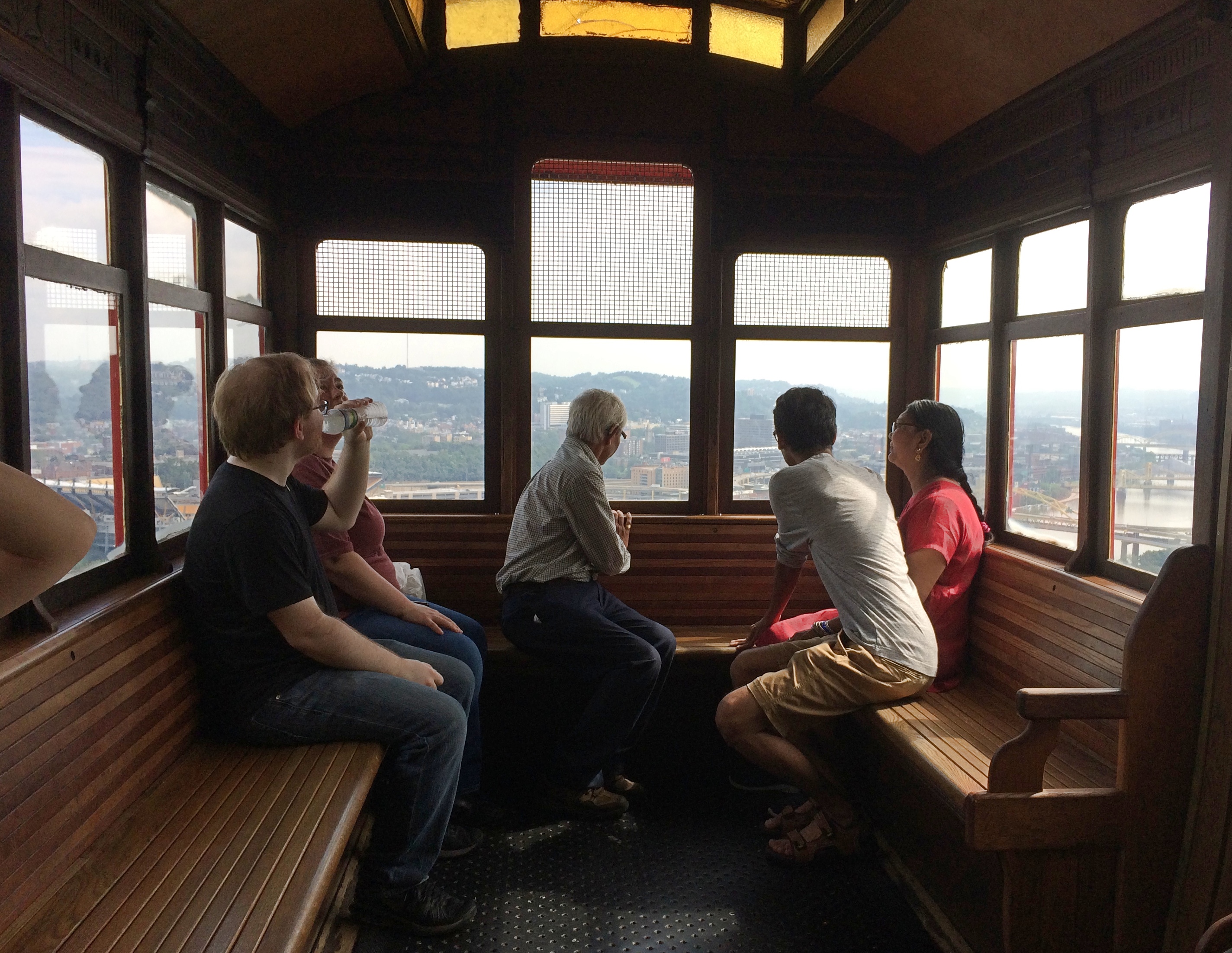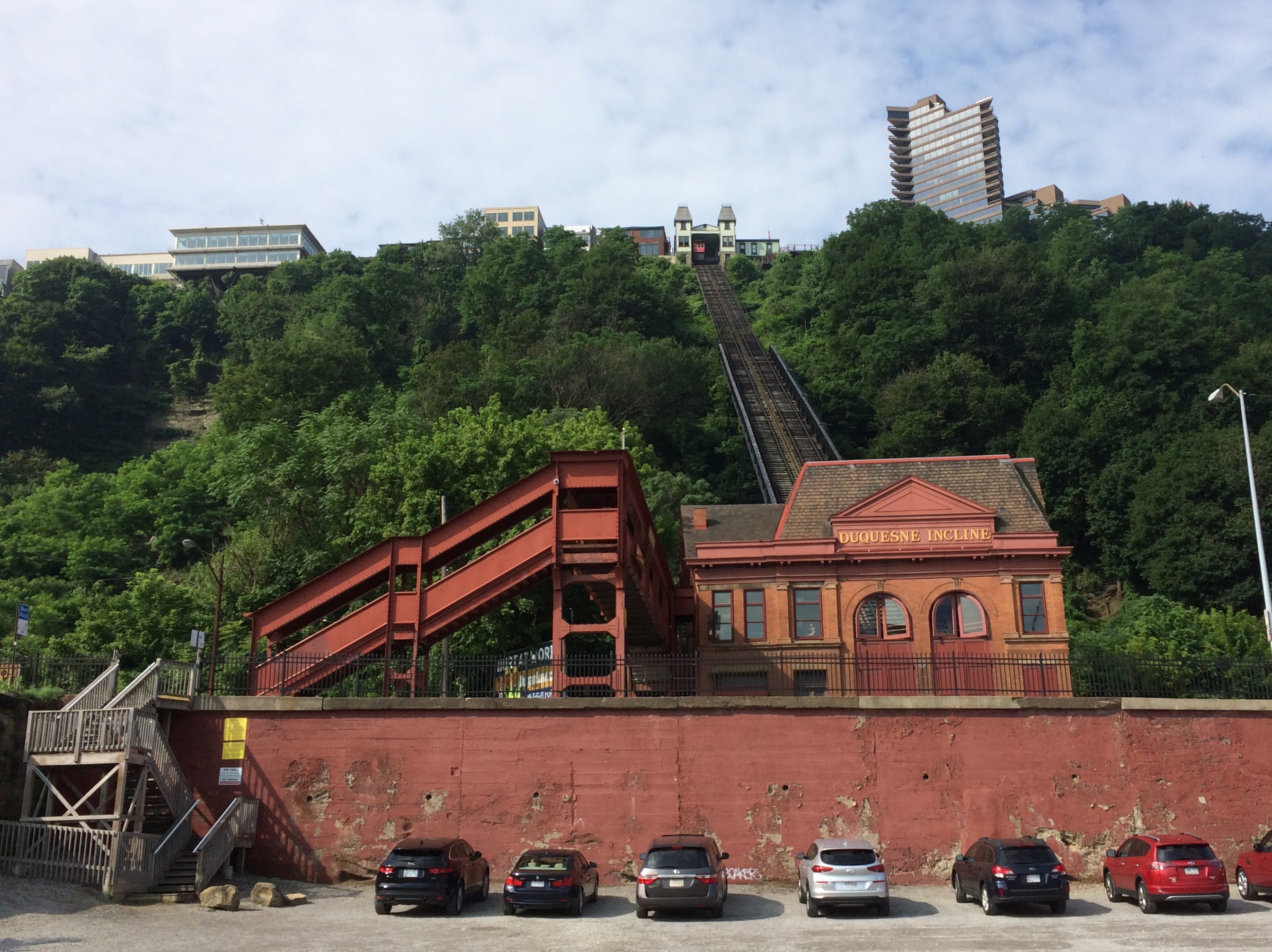A hundred years ago, hilly Pittsburgh had a lot of operational funiculars: the Castle Shannon Incline, Castle Shannon South Incline, Duquesne Incline, Knoxville Incline, Monongahela Incline, Monongahela Freight Incline, Mount Oliver Incline, Norwood Incline, Penn Incline, and the St. Clair Incline.
Yet others had already come and gone by then: the Bellevue Incline, Clifton Incline, Fort Pitt Incline, H.B. Hays and Brothers Coal Railroad, Nunnery Hill Incline, Pittsburgh and Castle Shannon Plane, Ridgewood Incline and the Troy Hill Incline.
That’s enough for a whole chapter of a coffee table book: Great Funiculars of the World, a sequel to Great Elevators of Europe. The designer of most of them was one man, Samuel Diescher, a Hungarian who came to America in 1866 and did an exceptional number of engineering projects during his career.
Only two funiculars survive in 21st-century Pittsburgh, the Duquesne Incline and the Monongahela Incline, about a mile apart on the slopes of Mt. Washington, to the south of downtown. We couldn’t come to Pittsburgh and not ride at least one of them, and so on mid-morning of July 5, we drove to the Duquesne’s lower-level parking lot and climbed the stairs on the left for access to the funicular.
The Duquesne, in operation since 1877 and restored in 1963, rises about 400 feet.
 Round-trip for ages 12 to 64 is $5, and completely worth it. Though part of Pittsburgh’s transit system, on a quasi-holiday in summer, tourists seemed to be the main customers.
Round-trip for ages 12 to 64 is $5, and completely worth it. Though part of Pittsburgh’s transit system, on a quasi-holiday in summer, tourists seemed to be the main customers.
 At the top is a splendid view of downtown Pittsburgh and the three rivers and their bridges, though things were a little hazy that morning. No matter.
At the top is a splendid view of downtown Pittsburgh and the three rivers and their bridges, though things were a little hazy that morning. No matter.
 A few minutes’ walk to the west of the top of the Duquesne is the small Point of View Park. Besides offering roughly the same view of downtown, the view from the park down the Ohio is nice.
A few minutes’ walk to the west of the top of the Duquesne is the small Point of View Park. Besides offering roughly the same view of downtown, the view from the park down the Ohio is nice.
 The park also features two bronzes in a curiously intimate pose: George Washington and Seneca leader Guyasuta by local artist James A. West (2006).
The park also features two bronzes in a curiously intimate pose: George Washington and Seneca leader Guyasuta by local artist James A. West (2006).
 A nearby plaque says that “this bronze depicts a meeting in October 1770 between [Washington and Guyasuta]… this work captures a moment in time between two formidable men whose actions had a huge impact on Pittsburgh…”
A nearby plaque says that “this bronze depicts a meeting in October 1770 between [Washington and Guyasuta]… this work captures a moment in time between two formidable men whose actions had a huge impact on Pittsburgh…”
Looking closely at the Wiki entry on Guyasuta, I see this detail about his name: “The many spelling variations include Guyashuta, Guyasoota, Guy-a-soot-er, Guyasootha, Guyasotha, Guyasutha, Kayashota, Kayasota, Kayasutha, Keyashuta, Kiasota, Kiashuta, Kiasutha, Kiosola, Kiyashuta, and Kyasoota.”
